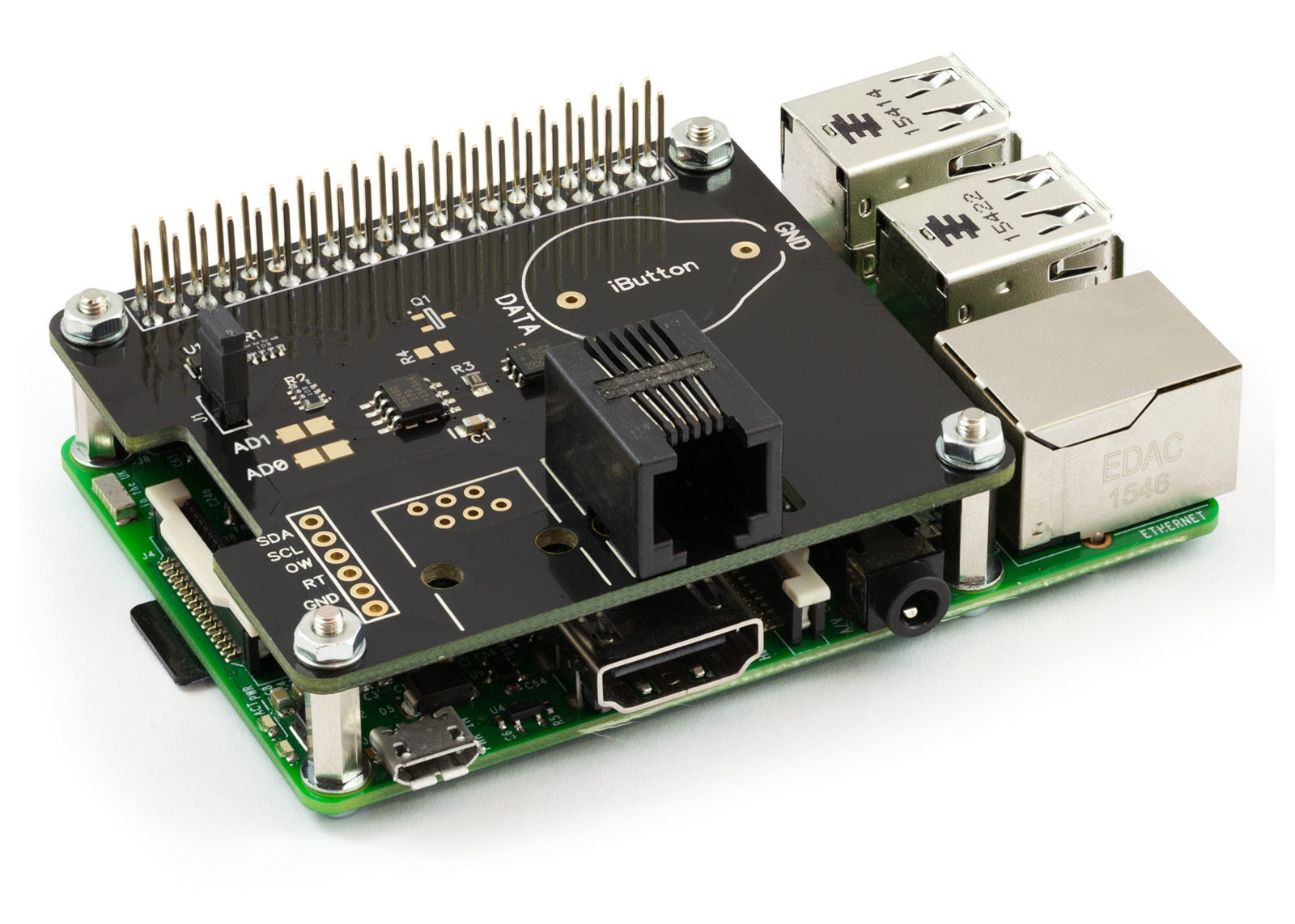1 Wire Pi Plus not detected
The 1 Wire Pi Plus and 1 Wire Pi Zero are a 1 Wire interface for the Raspberry Pi
13/09/2021
Posted by:
jfm
I installed a 1 Wire Pi Plus on a new Raspberry Pi 4B but it isn't detected by i2cdetect (no device detected).
- The jumper at J1 is in place
- My soldering skills are very limited and it took me ages, but I triple-checked that the soldering is clean, no bridges.
- I2C is enabled on the Pi (via raspi-config and the corresponding line is visible in /boot/config.txt, to which I also added the baudrate and core_freq settings). Duely rebooted, a few times actually.
- 3 DS18S20 sensors on the 1-wire line (soldered to the board)
Any ideas?
Thanks in advance,
JF
13/09/2021
Posted by:
andrew
Do you have a multimeter you could use to measure the 5V and GND pins on the corner next to the RJ12 connector? If 5V is present on those pins that means the 1 Wire Pi should be receiving power. If there is no voltage then there is a connection problem either with the J1 header or the GPIO header.
The most common reason for the 1 Wire Pi not working is a bad solder joint so it may be worth reheating each pin on the GPIO header to make sure the solder has flowed fully around the joint.
If the board still does not work after trying the suggestions above you could try reducing the I2C baud rate down to 100KHz just in case something is stopping it from working at its full speed. Update the baud rate parameter in /boot/config.txt to "dtparam=i2c_baudrate=100000" and hopefully, the 1 Wire Pi will appear on i2cdetect.
13/09/2021
Posted by:
jfm
Thanks for the reply. I don't have a multimeter but could connect the 5V port as an input to a relay board with both led and relay. Connecting the 5V GPIO pin to that setup normaly results in a LED turning on and the relay activating.
With the Pi Plus present, I can see there IS some voltage on the 5V port, but very little as the LED on the relay board barely lights up and the relay doesn't activate. Same thing when connecting to the 5V GPIO pin while the Pi Plus is present.
Interestingly, the 3.3V pins on the GPIO go also amiss when the Pi Plus is present: barely connecting a 3.3V pin to the relay input, which normally does nothing else than activating the relay, instead spread havoc on the GPIOs inputs levels (and turned my home into a Christmas tree as I use GPIO inputs to detect button pushes).
I've now removed the Pi Plus to avoid any damage.
Any thoughts? Frankly I wish I could have purchased a pre-soldered board.
Thanks,
JF
13/09/2021
Posted by:
andrew
It sounds like you have a short circuit somewhere. On the 1 Wire Pi Plus, the only GPIO header pins that are used are the first 6 pins for power and I2C and the various ground pins across the header so if there is a short circuit it is probably between one of those pins.
Is the board aligned correctly on the GPIO header? It should look like the photo below when it is connected to the Raspberry Pi.

18/09/2021
Posted by:
jfm
I checked many times with a powerful magnifying glass the soldering
I reheated the header pins
I ran a blade between all pins to make sure there was no micro-hair of metal short-circuiting things, both on the Wire Pi Plus and the PI's headers
I unsoldered the 1-wire cable so there is nothing else connected to the Pi and Wire Pi Plus than the ethernet cable, a USB HDD and the power (i.e. nothing connected to the Wire Pi Plus)
Every time, i2cdetect scans very slowly and floods the kernel log with "i2c transfer timed out" errors. Only once did it give instantly a full reply, and that did show an entry at 0x18, in what seems to be a random bit of luck (or an unnerving teaser).
I've spent many hours on this so this is a bit frustrating to say the least. Perhaps I botched something during the header soldering, but it's not apparent visually at least to me.
18/09/2021
Posted by:
andrew
I am sorry you are unable to get the 1 Wire Pi plus working. I have sent you an email about the board.
Forum Notice – Closure to New Posts
As part of our compliance with the UK’s Online Safety Act, the AB Electronics UK support forum is now closed to new posts and replies.
We understand the importance of continued support for our products, so if you have a technical query or require assistance, please use the Contact Form or consult our Knowledge Base for helpful articles and documentation.
We appreciate your understanding and continued support.
Note: documents in Portable Document Format (PDF) require Adobe Acrobat Reader 5.0 or higher to view.
Download Adobe Acrobat Reader or other PDF reading software for your computer or mobile device.
